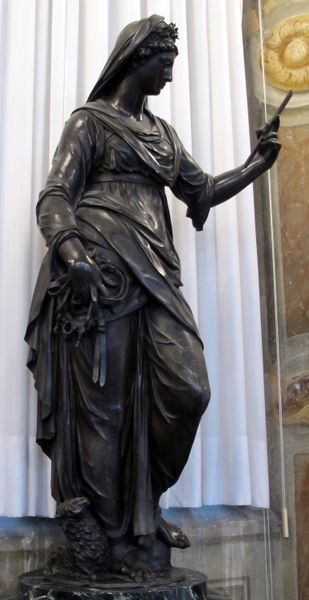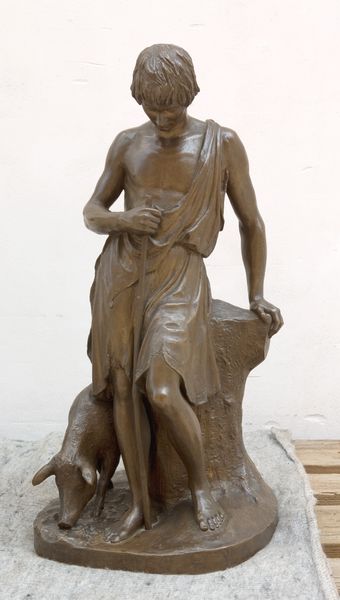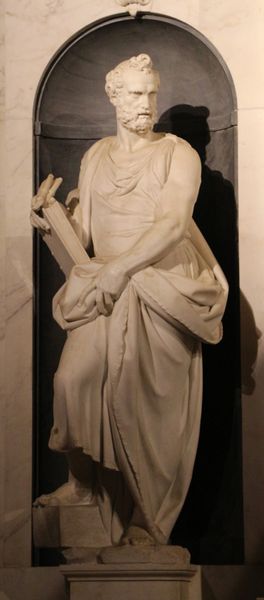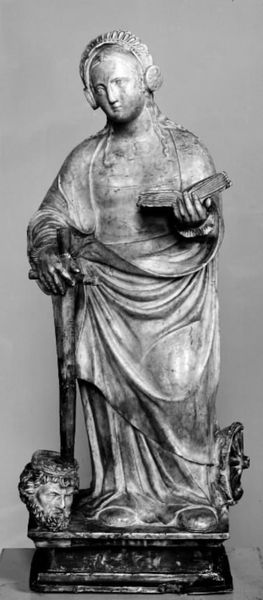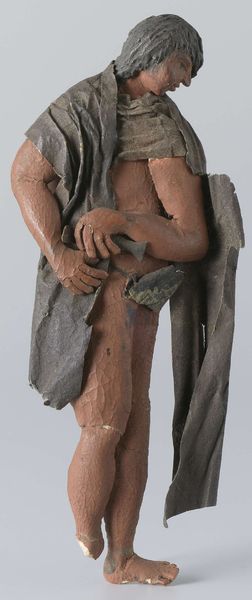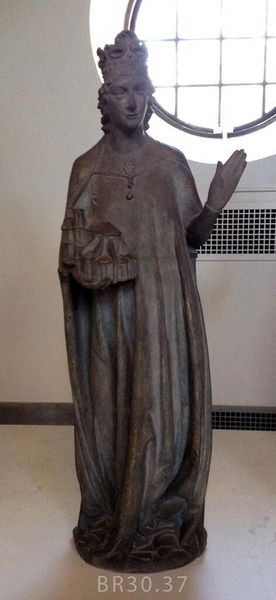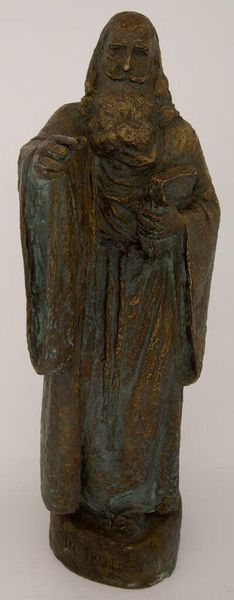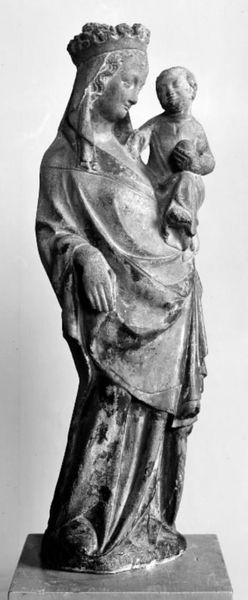
sculpture
#
portrait
#
sculpture
#
mannerism
#
figuration
#
sculpture
Copyright: Public domain
Domenico Beccafumi made this sculpture of the Annunciation, likely sometime in the early 16th century, from terracotta, or baked earth. It wasn't unusual to use this material in Renaissance workshops, as it allowed for modeling fine details and was relatively cheap. You can see the inherent qualities of terracotta: the surface is coarse and heavy, and retains a memory of the artist's touch. Beccafumi would have built the figure up gradually, perhaps using an armature to support the clay as he worked. He may have used wooden tools to refine the drapery, and his fingers to shape the face. The subsequent firing would have hardened the clay, giving it a durable, stone-like quality, though also causing some shrinkage and cracking. The layer of paint, now worn in places, gives the sculpture an added dimension, as if Beccafumi was trying to bring this humble material closer to life. It’s a testament to how art can be found in the everyday, and how skilled making can elevate common materials.
Comments
No comments
Be the first to comment and join the conversation on the ultimate creative platform.



